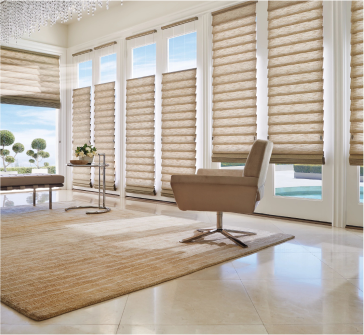Finding the best blinds for apartments can be tricky. While style is important, you also need to consider factors like light control, privacy, and landlord restrictions. After all, the perfect window treatments for your apartment must be functional, stylish, and potentially temporary.
This guide will explore nine of the best blind options for renters, along with the pros and cons of each type.
Whether you’re looking for privacy, light control, or a touch of luxury, there’s a perfect blind out there for your apartment.
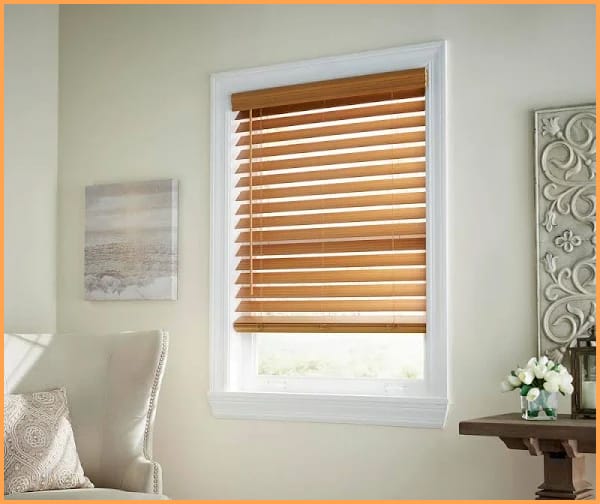
1. Cordless Mini Blinds
Cordless mini blinds are a classic and affordable option for apartments. They’re typically made from vinyl or aluminum, making them moisture-resistant and easy to clean – perfect for kitchens and bathrooms. Cordless mini blinds are also a great safety feature for homes with children or pets, as they eliminate the risk of strangulation.
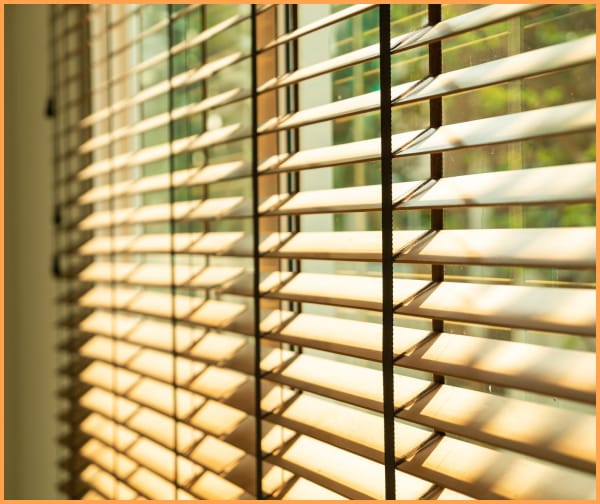
2. Faux Wood Blinds
Faux wood blinds offer the look and feel of real wood at a fraction of the price. They’re a popular choice for renters who want to add a touch of warmth and sophistication to their apartment. Faux wood blinds are also durable and moisture-resistant, making them suitable for any room in the apartment. They’re also easy to clean.
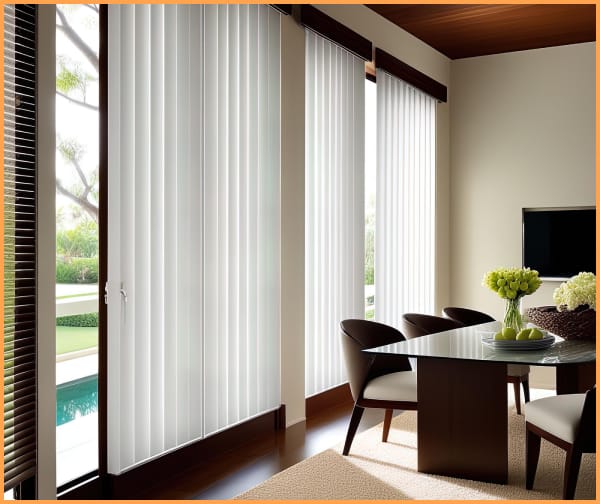
3. Vertical Blinds
Vertical blinds are a great option for large windows, sliding glass doors, or patio doors. They offer excellent light control and privacy and are easy to operate. Vertical blinds are also available in various materials, including vinyl, fabric, and faux wood. When measuring for vertical blinds, measure the width of the window opening and the length from the top of the mounting bracket to where you want the bottom of the blinds to hang.
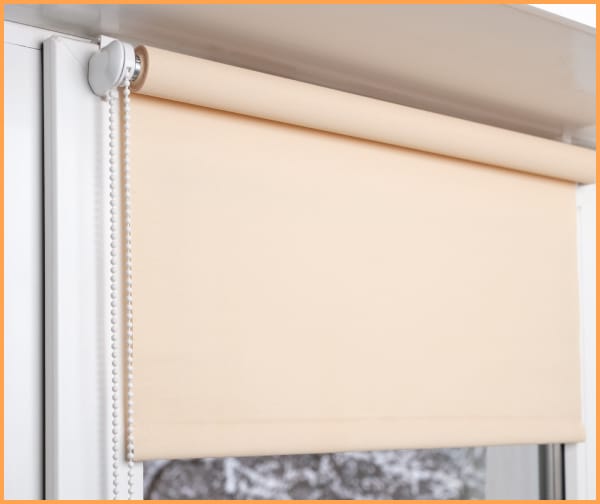
4. Fabric Roller Shades
Fabric roller shades are a simple and stylish way to dress your windows. They come in an array of fabrics, textures, and opacities, allowing you to customize the amount of light and privacy you desire. Fabric roller shades are also easy to clean and maintain.
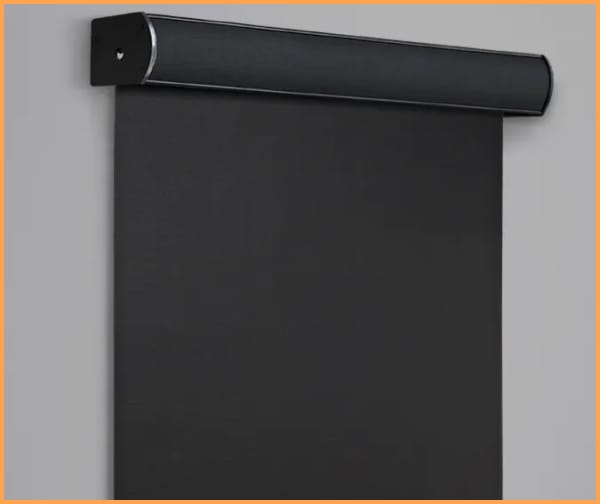
5. Solar Shades
Solar shades are a great option for energy-efficient apartments. They block harmful UV rays and help regulate indoor temperatures, potentially reducing energy bills. Solar shades are also available in different openness factors, allowing you to control the amount of light that enters the room.
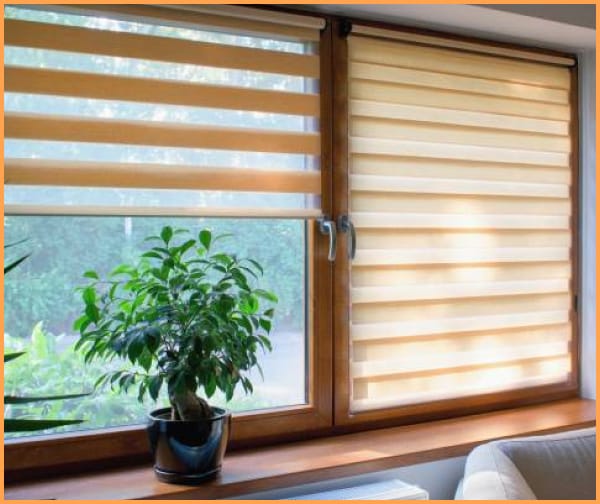
6. Day/Night Shades
Day/night shades, also known as zebra blinds, offer the best of both worlds: light-filtering and room-darkening blackout fabric. You can easily alternate between the two fabrics to achieve the desired light control and privacy level. Day/night shades are a great option for bedrooms, living rooms, or any room where you need both light control and privacy.
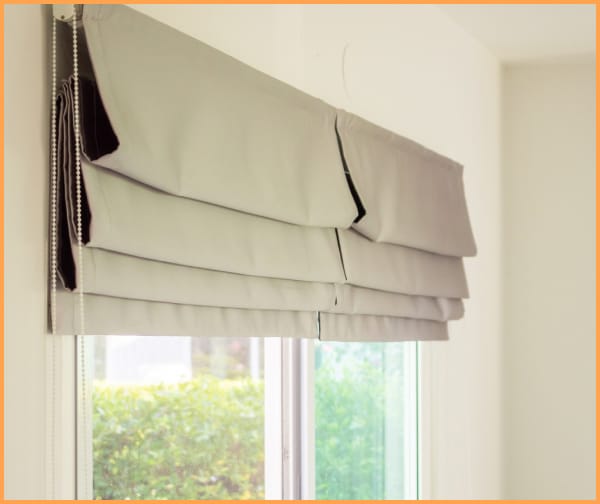
7. Roman Shades
Roman shades add a touch of elegance and sophistication to any apartment. They’re made from fabric that folds up neatly when raised, creating a soft, billowy look. Roman shades are available in a variety of fabrics, colors, and patterns, allowing you to customize them to your décor.
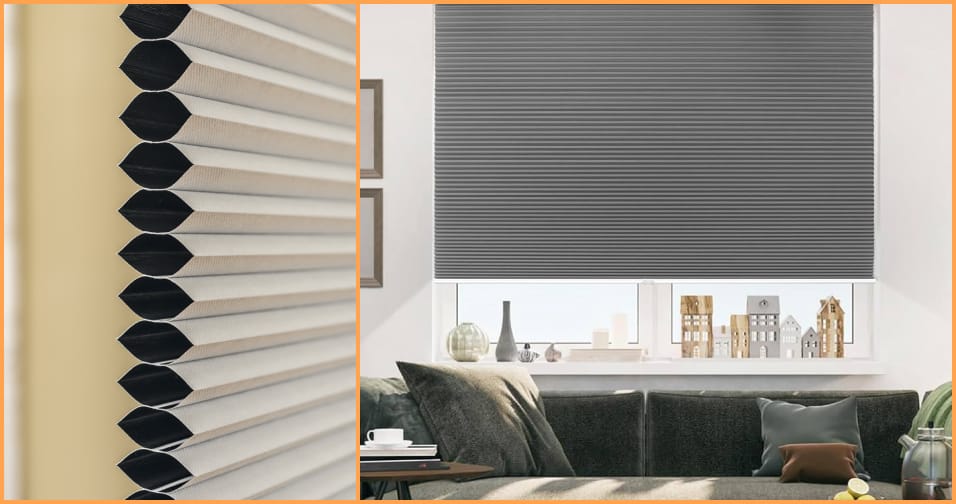
8. Cellular Shades
Cellular or honeycomb shades are a great option for energy efficiency and insulation. They’re made from a fabric that traps air in honeycomb-shaped pockets, which helps to regulate indoor temperatures. Cellular shades are also available in varying opacities, allowing you to control the amount of light that enters the room.
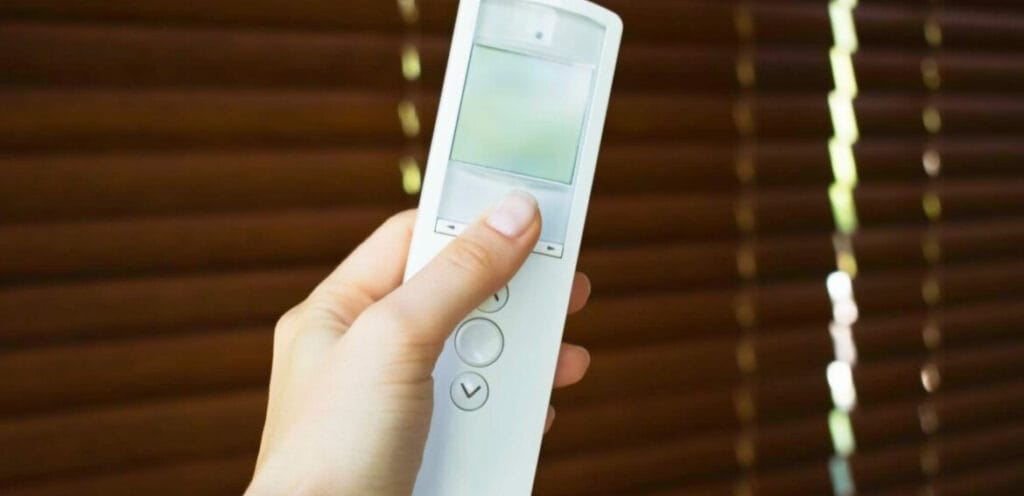
9. Motorized Blinds
The benefits of motorized blinds cannot be denied. They offer the ultimate in convenience and luxury. They can be operated by remote control or integrated into a smart home system. Motorized blinds are a great option for hard-to-reach windows or people with mobility limitations.
Landlord vs. Tenant Responsibilities for Blinds
Who’s responsible for blinds in an apartment often depends on your lease agreement. Typically, landlords provide and maintain basic window coverings, especially if included when you move in. They’re usually responsible for replacing blinds that wear out from regular use over time. However, if the damage is due to misuse—like broken slats from rough handling—the tenant may be charged for repairs or replacement.
When in doubt, check your lease or ask your property manager to avoid surprises.
Top Apartment Blind Trends
Design trends in 2026 are all about blending functionality with personal style. Renters are looking for window treatments that not only elevate their space but also align with tech, sustainability, and ease of use. Whether you’re refreshing a single room or doing a full apartment makeover, these are the top blind trends making an impact this year:
- Eco-Friendly Materials: Sustainable choices like bamboo, recycled fabrics, and PVC-free shades are gaining popularity among eco-conscious renters.
- Smart Blinds Integration: Motorized blinds that sync with smart home systems (like Alexa and Google Home) are trending for their convenience and high-tech appeal.
- Dual-Function Day/Night Shades: Zebra or dual-layered shades are in demand for their ability to switch between light-filtering and blackout settings.
- Soft Neutrals & Earthy Tones: Warm whites, clay, sand, and muted greens are dominating for their versatility and calming aesthetic.
- Textural Elements: Woven wood, linen-based rollers, and faux wood with grain detail are popular for adding depth and texture.
- Oversized Slats & Bold Frames: Clean lines and minimalist, oversized slats are being used to create modern, structured looks.
- High Light Filtering Fabrics: Light-diffusing options that brighten the space without sacrificing privacy are especially trending in smaller apartments.
- No-Drill & Temporary Mounting Options: Especially popular with renters, adhesive and tension rod blinds are a go-to solution for avoiding wall damage.
The Best Blinds for Apartments in 2026
Motorized blinds and cellular shades are two of the hottest blind trends right now. Consider one of these choices if you’re looking for a modern and stylish option.
In the end, however, finding the best blinds for your apartment depends on your individual needs and preferences. Before deciding, consider factors like light control, privacy, style, budget, and property restrictions.
If you have existing blinds and are looking for an easy refresh, you may be able to repair your blinds. Common blind problems, such as broken cords or slats, can be repaired relatively easily. If you’re not comfortable fixing your blinds yourself, you can usually hire a professional to do it for you.
Either way, with so many great options to choose from, you’re sure to find the perfect blind to fit your style and needs.
Frequently Asked Questions About Apartment Blinds
Are blinds a landlord’s responsibility?
In most cases, yes—landlords are typically responsible for providing and maintaining basic window coverings like blinds, especially if they were installed before you moved in. However, this can vary by lease agreement, so double-check your rental contract.
Are apartments supposed to replace blinds?
If the blinds are damaged due to normal wear and tear, many landlords will replace them at no cost. But if the damage is due to tenant misuse, the cost may come out of your security deposit.
What size are standard apartment blinds?
Standard apartment blinds usually measure between 24 to 60 inches wide and 36 to 72 inches long. However, it’s always a good idea to measure your windows carefully before shopping for replacements.
How to fix broken apartment blinds?
Many common blind issues—like tangled cords or bent slats—can be easily fixed. If you’re handy, a quick DIY fix might do the trick.

